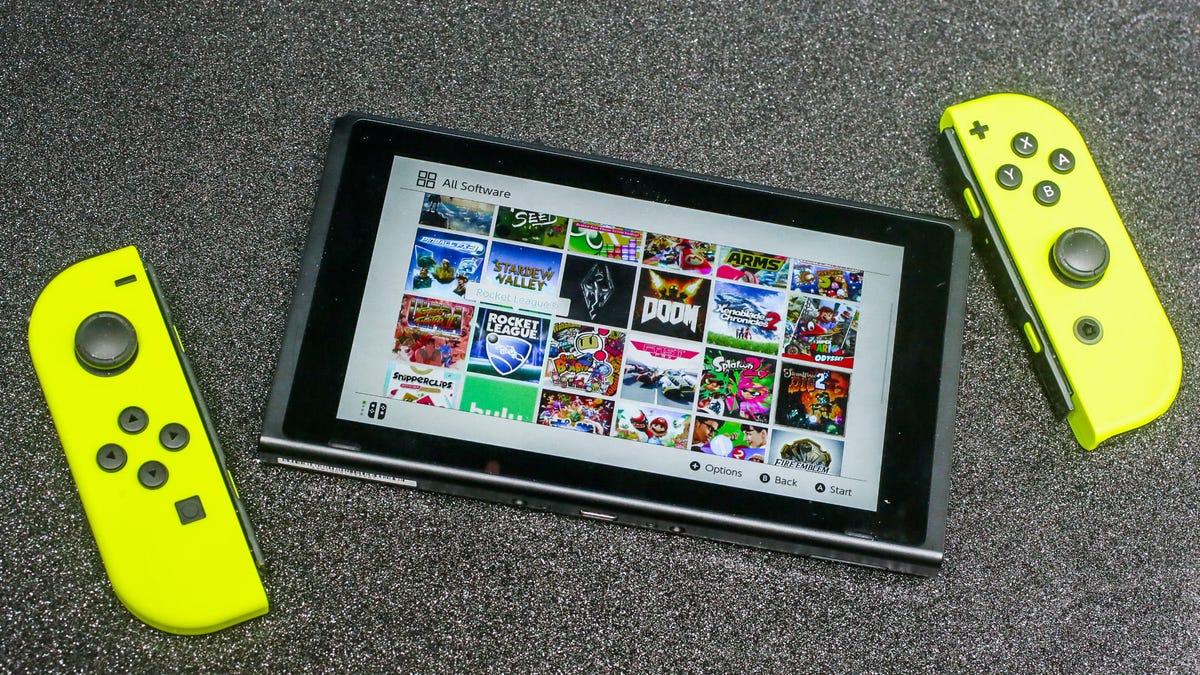Doom on the Switch shows motion controls still have a place
Or, how I learned to stop flailing and love the Joy-Con.

When I heard the stellar 2016 reboot of the classic shooter Doom was coming to the Nintendo Switch , I was impressed -- but I wasn't interested. For me, Doom was strictly a PC game. It wasn't a question of graphics (that the game could be ported to Switch at all is nothing short of a technical marvel) so much as control -- I grew up playing first-person shooters on a mouse and keyboard. The modern dual-stick controller is great for kicking back and playing games on the couch, but for me, it's just not precise enough for a game like Doom.
Then, earlier this week, the company quietly updated the game with motion controlled aiming. Now I'm playing Doom on Nintendo Switch. And I'm loving it.
Yes, there probably is something wrong with me, but hear me out: When done right, motion controls can strike a perfect, couch-friendly balance between the PC's mouse and keyboard and the traditional console gamepad. Nintendo's Splatoon 2, and now Doom, accomplish this masterfully -- you can still use the analog sticks to move around and swing your weapons in a wide arc, but you can also subtly tilt the controller for precise aim. It's sort of like having an invisible mouse.
It sounds complicated, but it actually feels surprisingly natural -- I regularly find myself trying to aim with gyro controls in games that don't support them. I'm not alone, either: Nintendo says that the vast majority of Splatoon players use gyro aiming, and asserts that it's more accurate than using traditional analog sticks. Unfortunately, it's an option available in scant few games. Apart from Splatoon 2, Doom, aiming arrows in games like The Legend of Zelda: Breath of the Wild and The Elder Scrolls V: Skyrim and a small handful of Vita and 3DS titles, it's just not widely used.
Sadly, that's probably Nintendo's fault.
For better or worse, the public's perception of motion controls is anchored to the legacy of the Nintendo Wii. Instead of offering a compelling motion control experience, most Wii games simply chose to replace the press of a button with the shake of a controller. Waggle the Wii Remote to use Mario's spin attack or to swing Link's sword. Flick your wrist to hit a digital ping-pong ball. Nintendo gave gamers every reason to dismiss the "revolution" that gave the Wii its original codename.
That may have been 12 years and two console generations ago, but the reputation of motion controls never really recovered -- and bad implementation still plagues Nintendo's modern-day console. Skyrim has solid gyro controls for aiming, and a surprisingly great use of HD rumble for lockpicking, but normal attacks call for nothing more than the standard Wiimote waggle -- again, needlessly replacing a button with a cumbersome flick of the wrist. Similarly, motion control in Dragonball Xenoverse 2 replaces a simple two-button combination with a series of gestures. Firing a kamehameha has never been more complicated.
Not even first-party games are immune from bad motion-control implementation. Super Mario Odyssey may be a masterpiece of 3D platforming, but many of Mario's advanced moves can only be directly executed with a button-replacing controller waggle. That's just motion for the sake of motion.
It doesn't have to be that way, though. Splatoon 2 and Doom both use motion controls to offer a better play experience -- and Arms' motion controls may look like standard waggling, but they actually offer slightly more nuance in curving punches than the standard controls. Gyro aiming is even showing up in last-gen game ports, including LA Noire and Resident Evil Revelations.
If you're weirdly obsessed with motion controls like me, these improvements are bittersweet. Yes, the state of motion controls in console games is improving, but it's still mostly limited to the Nintendo Switch -- a huge shame considering the motion and gyro sensors packed into the PlayStation 4 controller (which have been there since the PS3!). If you're eager to try out the more nuanced controls packed into your Switch's Joy-Cons, check out the games mentioned above. If you need gyro controls in even more games? Well, there's always the Steam Controller.

